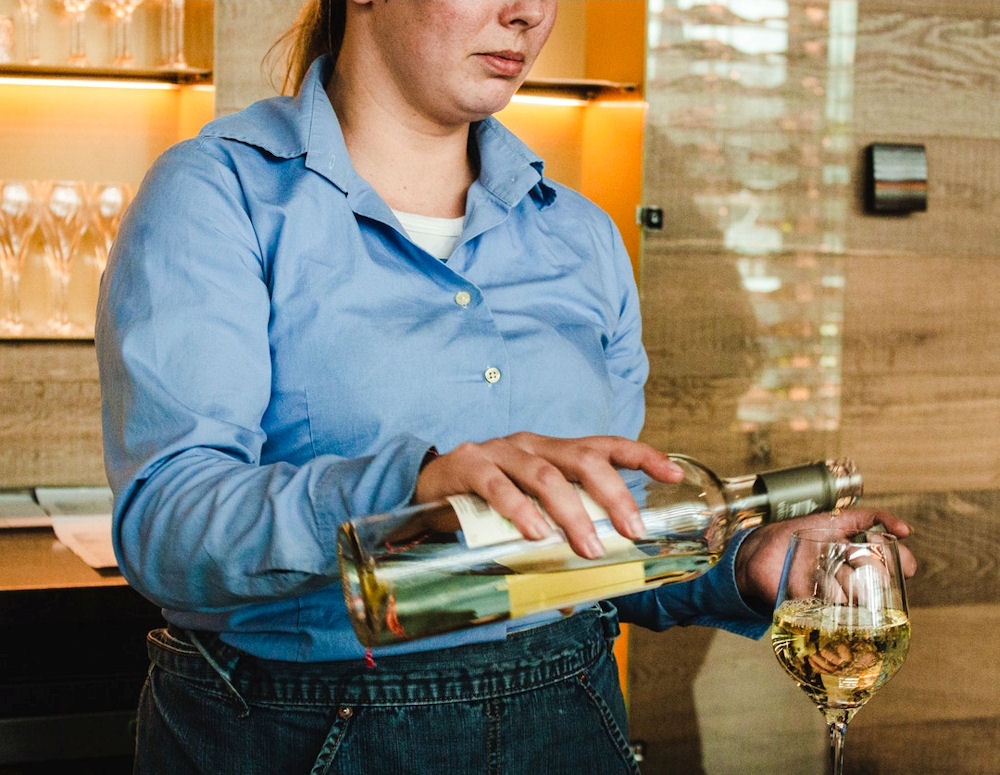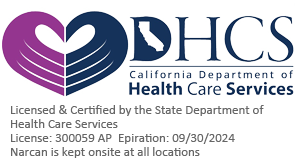
Understanding the term “proof” in alcoholic beverages is more than a curiosity; it’s a step toward responsible drinking and informed choices. The proof of a drink not only reveals its alcohol content but also underscores the role moderation plays in preventing harmful patterns of use. With nearly 29.5 million adults in the United States struggling with alcohol use disorder annually, the consequences of excessive drinking affect far too many lives.
At Laguna Shores Recovery in Dana Point, California, we know that education and awareness are key to preventing addiction. For those already facing challenges with alcohol, professional treatment can make all the difference in achieving long-term recovery.
What is Proof?
Proof is a measure of the strength or concentration of alcohol in a beverage. It is commonly used in the United States and some other countries to indicate how potent a drink is. The proof system helps consumers understand how much alcohol they are consuming and make informed choices.
In simple terms, proof is twice the percentage of alcohol by volume (ABV) in a beverage. For example, if a drink has an ABV of 40%, its proof would be 80. This straightforward relationship makes it easier for consumers to gauge the strength of their drinks.
The History of Proof
The concept of proof dates back to the 16th century when British sailors would test the alcohol content of rum. They would mix rum with gunpowder and attempt to ignite it. If the mixture ignited, the rum was considered “proof” that it was strong enough to be consumed. This method was crude but effective, leading to the establishment of the proof system we know today.
Over time, the proof system evolved, and different countries adopted their methods of measuring alcohol strength. The United States uses the 2:1 ratio, while the United Kingdom uses a different scale, which can sometimes lead to confusion among consumers.
How is Proof Calculated?
Calculating proof is relatively straightforward. In the United States, the proof value is simply double the ABV. For instance, if a beverage has an ABV of 50%, its proof would be 100. This calculation provides a quick way for consumers to understand the alcohol content of their drinks.
Understanding Alcohol by Volume (ABV)
ABV is a standard measure used worldwide to quantify the amount of alcohol in a beverage. It is expressed as a percentage, indicating how much of the total volume of liquid is pure alcohol. For example, a wine with an ABV of 12% means that 12% of the liquid is alcohol.
Knowing the ABV is crucial for understanding proof as it serves as the foundation for the calculation. Different types of alcoholic beverages have varying ABV levels, which can influence their proof. For example, spirits like vodka and whiskey typically have higher ABV percentages, resulting in higher proof values.
Variations in Proof Systems
While the United States uses the 2:1 ratio for proof, other countries have different systems. In the United Kingdom, for example, the proof system is based on a scale where 100 proof is defined as 57.15% ABV. This can create confusion for consumers who may not be familiar with international standards.
Consumers need to be aware of these differences, especially when traveling or purchasing alcohol from international sources. Understanding how proof is calculated in various countries can help avoid misunderstandings regarding the strength of a beverage.
Why Does Proof Matter?
Understanding proof is important for several reasons. It helps consumers make informed decisions about their alcohol consumption, ensures responsible drinking, and aids in understanding the effects of different beverages.
Knowing the proof of a drink allows consumers to gauge its strength and make choices that align with their preferences and tolerance levels. For example, someone who prefers lighter beverages may opt for drinks with lower proof, while those looking for a stronger experience might choose higher-proof options.
This knowledge can also help individuals avoid overconsumption of alcohol, as higher-proof drinks contain more alcohol per ounce. Being aware of proof can lead to more responsible drinking habits and a better overall experience.
Understanding proof is essential for cultivating responsible drinking habits. The higher the proof, the stronger the alcohol content, which means high-proof beverages can lead to faster intoxication. When individuals consume alcohol without being mindful of proof, the risk of impaired judgment, risky behaviors, and long-term health problems dramatically increases. Over time, repeated overconsumption can pave the way to dependence and addiction, making education about proof an important tool for prevention.
By being aware of a drink’s proof, individuals can make informed decisions about their alcohol intake and better manage their consumption. This self-awareness helps reduce the likelihood of crossing personal limits or slipping into harmful patterns. Establishments that provide clear proof labels on their offerings empower consumers to make safer, more conscious choices. Ultimately, understanding proof isn’t just a technical detail; it’s a crucial part of promoting accountability and protecting one’s well-being when drinking.
The effects of alcohol can vary significantly based on its proof. Higher-proof drinks can lead to faster intoxication and more pronounced effects, while lower-proof beverages may result in a more gradual experience. Understanding these differences can help consumers choose drinks that align with their desired experience.
For instance, a cocktail made with high-proof spirits may deliver a strong kick, while a beer with a lower ABV may provide a more subtle effect. Being aware of these distinctions can enhance the enjoyment of social occasions and personal preferences.

What are Common Misconceptions About Proof?
Despite its importance, there are several misconceptions surrounding proof that can lead to confusion among consumers. Addressing these misunderstandings can help clarify the concept and promote informed choices.
One common misconception is that higher-proof drinks are of better quality. While some premium spirits do have higher alcohol content, proof does not inherently indicate the quality of a beverage. Quality is determined by various factors, including ingredients, production methods, and flavor profiles.
Consumers should focus on the overall experience and taste of a drink rather than solely on its proof. Enjoying a lower-proof beverage can be just as satisfying as indulging in a higher-proof option, depending on personal preferences.
Another misconception is that all high-proof drinks are dangerous. While it’s true that higher-proof beverages can lead to quicker intoxication, responsible consumption is key. Many people enjoy high-proof drinks in moderation without experiencing negative effects.
Education about proof and responsible drinking practices can help dispel this myth. Enjoying high-proof beverages responsibly can lead to a pleasurable experience without adverse consequences.
Many consumers assume that proof is a universal measurement, but this is not the case. As previously mentioned, different countries have different systems for measuring proof, which can lead to confusion when purchasing or consuming alcohol internationally.
Understanding these variations is essential for consumers, especially when traveling or ordering drinks from different regions. Being informed about proof systems can enhance the enjoyment of diverse alcoholic offerings.
Exploring Alcoholic Beverages by Proof
Alcoholic beverages can be categorized based on their proof levels, allowing consumers to explore a wide range of options. Understanding these categories can enhance the experience of selecting drinks for various occasions.
Low-proof beverages typically have an ABV of 10% or lower, resulting in a proof of 20 or less. These drinks are often lighter and more refreshing, making them ideal for casual gatherings or warm weather. Examples include light beers, wines, and some cocktails.
Low-proof options are popular among those who prefer a more relaxed drinking experience. They allow for socializing without the risk of overindulgence, making them a great choice for parties or casual outings.
Moderate-proof beverages generally have an ABV ranging from 10% to 20%, resulting in a proof of 20 to 40. This category includes many popular wines, spirits, and cocktails. These drinks offer a balance of flavor and potency, appealing to a wide range of consumers.
Moderate-proof options are versatile and can be enjoyed in various settings, from dinner parties to celebrations. They provide a satisfying experience without overwhelming the palate, making them a favorite among many drinkers.
High-proof beverages have an ABV of 20% or higher, resulting in a proof of 40 or more. This category includes spirits like whiskey, rum, and vodka, which are often used in cocktails or enjoyed neat. High-proof drinks are known for their bold flavors and strong effects.
While high-proof options can be enjoyable, it is essential to consume them responsibly. Understanding the proof of these beverages can help individuals appreciate their complexity while managing their intake effectively.
Final Thoughts on Proof of Alcohol
Understanding proof in alcoholic beverages goes beyond simple knowledge; it’s about making informed decisions and fostering a healthier relationship with alcohol. Recognizing the difference between enjoying an occasional drink and feeling a need for alcohol is vital in maintaining balance and preventing harmful patterns. High-proof beverages can lead to quicker intoxication, which makes it all the more important to be aware of the content and how it may impact your body and mind.
At Laguna Shores Recovery in Dana Point, California, we understand that navigating drinking habits can sometimes feel overwhelming. If you find yourself questioning whether your relationship with alcohol is healthy or feel that drinking has become more of a need than a choice, we’re here to help. Our team is ready to provide guidance, support, and resources tailored to your individual needs. Understanding that proof is just one part of promoting responsible drinking, but knowing when to reach out for help is an even more critical step toward well-being and recovery.
A Warning From Laguna Shores on the Dangers of Alcohol Consumption
Alcohol consumption carries significant risks, especially when not approached responsibly. Excessive drinking can harm your body, mind, and personal life. Studies show that alcohol is the most frequently used addictive substance in California, with nearly 18% of adults in the state engaging in binge drinking. This dangerous habit increases the risk of addiction, as well as health issues like liver disease, heart problems, and mental health struggles.
At Laguna Shores Recovery, we understand how alcohol can take over someone’s life and provide a full suite of personalized treatment options to address addiction. This includes detox and residential treatment options. Whether you’re just beginning to question your drinking habits or battling advanced alcohol dependency, our compassionate team is here to help guide you toward lasting recovery. You don’t have to face this alone.
Want to Learn More About Laguna Shores Recovery?

Understanding proof in alcoholic beverages is not just about knowing alcohol content; it’s a step toward making informed and responsible drinking choices. By recognizing the significance of proof, individuals can better manage their consumption and discern the fine line between enjoying a drink and developing harmful patterns. Responsible drinking is key to reducing the risks associated with alcohol, including addiction.
If you or someone you know is struggling with alcohol dependence, remember that help is available. At Laguna Shores Recovery in California, we offer compassionate, professional care to help individuals reclaim their lives from addiction. Whether you’re looking to explore healthier habits or need comprehensive treatment, our team is here to guide you toward a lasting recovery. Take the first step and reach out today.

 Matthew Beck B.A, M.A, LMFT
Matthew Beck B.A, M.A, LMFT 


